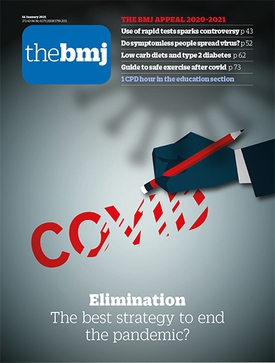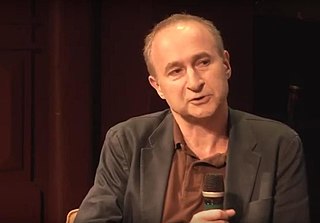Related Research Articles

PLOS is a nonprofit publisher of open-access journals in science, technology, and medicine and other scientific literature, under an open-content license. It was founded in 2000 and launched its first journal, PLOS Biology, in October 2003.

Open access (OA) is a set of principles and a range of practices through which nominally copyrightable publications are delivered to readers free of access charges or other barriers. With open access strictly defined, or libre open access, barriers to copying or reuse are also reduced or removed by applying an open license for copyright, which regulates post-publication uses of the work.

The BMJ is a weekly peer-reviewed medical journal, published by BMJ Group, which in turn is wholly-owned by the British Medical Association (BMA). The BMJ has editorial freedom from the BMA. It is one of the world's oldest general medical journals. Previously called the British Medical Journal, the title was officially shortened to BMJ in 1988, and then changed to The BMJ in 2014. The journal is published by BMJ Publishing Group Ltd, a subsidiary of the British Medical Association (BMA). The current editor-in-chief of The BMJ is Kamran Abbasi, who was appointed in January 2022.
In academic publishing, a retraction is a mechanism by which a published paper in an academic journal is flagged for being seriously flawed to the extent that their results and conclusions can no longer be relied upon. Retracted articles are not removed from the published literature but marked as retracted. In some cases it may be necessary to remove an article from publication, such as when the article is clearly defamatory, violates personal privacy, is the subject of a court order, or might pose a serious health risk to the general public.

David HealyFRCPsych, a professor of psychiatry at Bangor University in the United Kingdom, is a psychiatrist, psychopharmacologist, scientist and author. His main areas of research are the contribution of antidepressants to suicide, conflict of interest between pharmaceutical companies and academic medicine, and the history of pharmacology. Healy has written more than 150 peer-reviewed articles, 200 other articles, and 20 books, including The Antidepressant Era, The Creation of Psychopharmacology, The Psychopharmacologists Volumes 1–3, Let Them Eat Prozac and Mania: A Short History of Bipolar Disorder.

Embryonic stem cells (ESCs) are pluripotent stem cells derived from the inner cell mass of a blastocyst, an early-stage pre-implantation embryo. Human embryos reach the blastocyst stage 4–5 days post fertilization, at which time they consist of 50–150 cells. Isolating the inner cell mass (embryoblast) using immunosurgery results in destruction of the blastocyst, a process which raises ethical issues, including whether or not embryos at the pre-implantation stage have the same moral considerations as embryos in the post-implantation stage of development.
The impact factor (IF) or journal impact factor (JIF) of an academic journal is a scientometric index calculated by Clarivate that reflects the yearly mean number of citations of articles published in the last two years in a given journal, as indexed by Clarivate's Web of Science.

Randy Wayne Schekman is an American cell biologist at the University of California, Berkeley, former editor-in-chief of Proceedings of the National Academy of Sciences and former editor of Annual Review of Cell and Developmental Biology. In 2011, he was announced as the editor of eLife, a new high-profile open-access journal published by the Howard Hughes Medical Institute, the Max Planck Society and the Wellcome Trust launching in 2012. He was elected to the National Academy of Sciences in 1992. Schekman shared the 2013 Nobel Prize for Physiology or Medicine with James Rothman and Thomas C. Südhof for their ground-breaking work on cell membrane vesicle trafficking.

Jim van Os is a Dutch academic and psychiatrist. He is Professor of Psychiatry at Utrecht University and medical manager of the Brain Center at UMC Utrecht, the Netherlands.
James Edgar Till is a University of Toronto biophysicist, best known for demonstrating – with Ernest McCulloch – the existence of stem cells.

The Directory of Open Access Journals (DOAJ) is a website that hosts a community-curated list of open access journals, maintained by Infrastructure Services for Open Access (IS4OA). It was launched in 2003 with 300 open access journals.
Open peer review is the various possible modifications of the traditional scholarly peer review process. The three most common modifications to which the term is applied are:
- Open identities: Authors and reviewers are aware of each other's identity.
- Open reports: Review reports are published alongside the relevant article.
- Open participation: The wider community are able to contribute to the review process.
Translational research is research aimed at translating (converting) results in basic research into results that directly benefit humans. The term is used in science and technology, especially in biology and medical science. As such, translational research forms a subset of applied research.

Mesenchymal stem cells (MSCs) also known as mesenchymal stromal cells or medicinal signaling cells, are multipotent stromal cells that can differentiate into a variety of cell types, including osteoblasts, chondrocytes, myocytes and adipocytes.

Predatory publishing, also write-only publishing or deceptive publishing, is an exploitative academic publishing business model, where the journal or publisher prioritizes self-interest at the expense of scholarship. It is characterized by misleading information, deviates from the standard peer review process, is highly non-transparent, and often utilizes aggressive solicitation practices.
Translational Psychiatry is a peer-reviewed medical journal published by Nature Publishing Group. It is a sister journal to the better-known Molecular Psychiatry. While both journals cover the larger field of biological psychiatry, Translational Psychiatry is more focused on translational aspects of research. It was launched on April 5, 2011, when the editor-in-chief of both journals, Julio Licinio, announced it during the First National Symposium on Translational Psychiatry at The Australian National University. One of the first articles was a guest editorial by Thomas Insel, who stated that "Translational Psychiatry has an opportunity to make a difference by publishing the best science at a time when we can see this historic bridge being built that will link science, practice and policy. I, for one, will watch with enthusiasm." Translational Psychiatry has been criticized for requiring author fees to submit critiques of articles published in the journal since this could insulate articles from critics.
BMJ USA: Primary Care Medicine for the American Physician was a monthly peer-reviewed medical journal published by the BMJ Group as a sister journal to the BMJ. It was intended to publish material specifically relevant to readers in the United States. It was established in 2001 and was discontinued permanently in 2005.

Graziella Pellegrini is an Italian Professor of Cell Biology and the Cell Therapy Program Coordinator at the University of Modena and Reggio Emilia. She has developed and championed cell therapy protocols in hospitals across Italy.
Kowsar - now Brieflands - is an STM publishing company which was founded in 2002 by S.M. Miri and Seyed-Moayed Alavian. Kowsar journals have been peer reviewed and are published open access under a Creative Commons Attribution License Non Commercial 4.0. The company is a member of the Committee on Publication Ethics.

General Psychiatry is a bimonthly peer-reviewed open-access medical journal covering mental health topics relevant to psychiatrists and mental health professionals.
References
- 1 2 Akers, Katherine G. (2016-11-21). "New journals for publishing medical case reports". Journal of the Medical Library Association. 104 (2): 146–149. doi:10.5195/jmla.2016.62. ISSN 1558-9439. PMC 4816468 . PMID 27076803.
- ↑ Bates, Susan E. (2017-02-01). "Too Many Journals". The Oncologist. 22 (2): 126–128. doi:10.1634/theoncologist.2017-0012. ISSN 1083-7159. PMC 5330714 . PMID 28188259.
- ↑ Sharp, Phillip A.; Bonvillian, William B.; Desimone, Robert; Imperiali, Barbara; Karger, David R.; Mavhunga, Clapperton Chakanetsa; Brand, Amy; Lindsay, Nick; Stebbins, Michael (November 2023). to science and scholarship - MIT report v1.5-71707399204986.pdf "Access to Science and Scholarship: Key Questions about the Future of Research Publishing" (PDF). pp. 23–4.
{{cite web}}: Check|url=value (help) - ↑ "Warning on 'Mirror Journals'". Inside Higher Ed. Retrieved 31 December 2019.
- ↑ "Directory of Open Access Journals – DOAJ, Mirror Journals". doaj.org. Retrieved 2024-08-26.
- ↑ Licinio, J (April 2011). "Translational Psychiatry: leading the transition from the cesspool of devastation to a place where the grass is really greener". Translational Psychiatry. 1 (4): e1. doi:10.1038/tp.2011.3. ISSN 2158-3188. PMC 3309469 . PMID 22832389.
- ↑ Davis, Ronald M.; Smith, Richard; Wilkes, Michael (2001-02-17). "The US sisters of the BMJ: The BMJ is becoming more active in the US". BMJ. 322 (7283): 380. doi:10.1136/bmj.322.7283.380. ISSN 0959-8138. PMC 1119621 . PMID 11179144.
- ↑ McNutt, Marcia (2014-01-17). "Reproducibility". Science. 343 (6168): 229. Bibcode:2014Sci...343..229M. doi:10.1126/science.1250475. ISSN 0036-8075. PMID 24436391. S2CID 220096703.
- ↑ "Nature's sister journals in review". Nature. 374 (6522): 577–578. April 1995. Bibcode:1995Natur.374..577.. doi:10.1038/374577a0. ISSN 0028-0836. S2CID 19330422.
- ↑ "For Authors". Oncogenesis. Retrieved 2018-10-18.
- ↑ Lappin, T. R.; Editors of the Sister Journals (2015-01-22). "Editorial: Sibling Synergy". Stem Cells. 33 (2): 316–317. doi: 10.1002/stem.1912 . ISSN 1066-5099. PMID 25504305.
{{cite journal}}:|author2=has generic name (help)